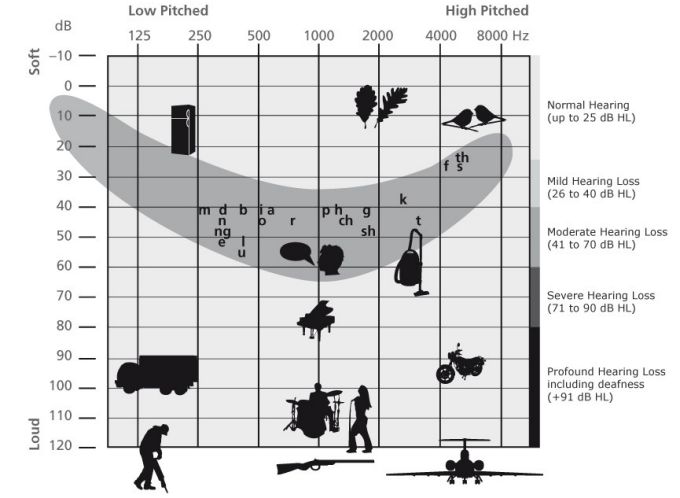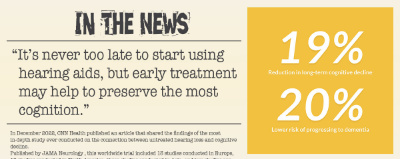Hearing aids are designed to amplify the sounds surrounding us, but most importantly the sounds of speech. However, understanding speech is only one part of the process of communication. The development of speech itself is a complex process that takes years to develop. Language development is fueled by social interaction, cognitive processing and conceptual processing. The foundation of language takes place during the first two years of life. After 24 months, over 100 words can be spoken and by age four, complete and coherent sentences are produced.
Language Development Milestones
The rate of language development is influenced by many things such as the child’s environment. Parental interaction plays a major role in language development, storytelling and word games help significantly improve literacy outcome. Other factors such as genetics and medical conditions such as a hearing loss can affect speech development. As a result, hearing losses affect speech understanding. Which not only delays the development of language, but also correction of speech errors. Children with hearing losses are often followed by speech language pathologist to correct the speech errors and most commonly the pronunciation of high frequency sounds such as consonants “S” and “F”.
Although language development varies greatly between individuals, certain milestones are used to gauge and measure normal language development. Children with a vocabulary under 50 words after twenty four months are recognized as having a slow expressive language development. Falling behind on language milestones can affect academic success, anxiety management and social difficulties as the child develops. Over the years, many language development techniques and tools have been created to ensure that all children can reach these milestones. If you are concerned with your child’s speech development and have not had their hearing tested, consider contacting their paediatrician to discuss your concerns. The Children’s Hospital of Eastern Ontario oversees hearing testing for children. In addition, there are various clinics in the Ottawa area that are available to test children from infancy to the age of 5.
Diagnosing Paediatric Hearing Loss
Hearing losses often develop over time, but children can be born with a hearing loss due to genetics or pregnancy complications. According to the Ontario Ministry of Children and Youth Services, 4 in 1000 Canadians are born each year with a form of hearing loss. For these children, getting hearing aids as soon as possible is essential for language development. Once children are diagnosed with a hearing loss, hearing aids are typically fit by the age of six months. If traditional hearing aids are not a good option, cochlear implants (which are surgically implanted) are generally the next recommendation.
Since our most effective means of finding hearing thresholds for adults requires them to be able to respond any time that they hear a sound, we can not do the same thing with the paediatric population. There are several different methods of testing hearing at different stages of development. These include using Otoacoustic emissions (OAEs), Auditory brainstem Response (ABR), Visual reinforced audiometry (VRA) and Play audiometry.
Types of Testing for Infants and Children
OAEs –The OAE test is used to find out how well the inner ear, or cochlea, works. It measures otoacoustic emissions. A small earphone, or probe, is placed in the ear. The probe produces sound and measures the sounds that come back. The health care professional administering the test can see the results on the monitor screen.
ABR – The auditory brainstem response (ABR) test tells us how the cochlea, and the brain pathways for hearing are working. You may also hear it called an auditory evoked potential (AEP). Electrodes are placed on the baby’s head while sounds are played into the ears. The brain’s response to these sounds is then measured. A broad but accurate hearing test can be completed using ABR testing.
VRA – With VRA, the Audiologist conditions your child to respond by turning their head towards the sound, and then reward them with a toy, lights, or other sounds that are located on each side of the sound booth. In some circumstances, an additional team member may be in the booth, to help with the testing. Essentially, your child does not necessarily need to perform a task, but rather is expected to turn his or her head towards the sound out of curiosity
Play audiometry – With play audiometry, typically there are two individuals that help with testing. One member will play with your child inside the sound booth while the Audiologist performs the hearing test. Instead of pressing a button when they hear a sound, the clinician conditions your child to play when they hear the sound. For example, a request to add a block on a tower or insert a coin into a game. Play audiometry is best suited for children ages 3 to 6, though this may vary depending on the child’s attention and ability to be conditioned.
Ontario’s Infant Hearing Program
The Infant Hearing Program is an initiative of the Government of Ontario’s Ministry of Children and Youth Services. The purpose of the infant hearing program is to help identify infants who are deaf or at risk of developing hearing loss in early childhood and provide related support and communication development services to families. In Ontario, all newborn babies can have their hearing screened. There is no charge for the screening, and it is a simple, fast, reliable process.
It’s important to find out if your baby has hearing loss. Undetected hearing loss can cause delays in your baby’s language development which can lead to behavioral and emotional problems and, later on, to problems in school. The sooner hearing loss is identified, the better. There are many services available to help children with hearing loss. Finding out early means that they can get the help they need right away, and this gives them the same chance to develop language skills as hearing children.
If you are interested in having your Infant’s hearing screened, please contact your local Infant Hearing Program provider.
*The images on this blog post are courtesy of Phonak






